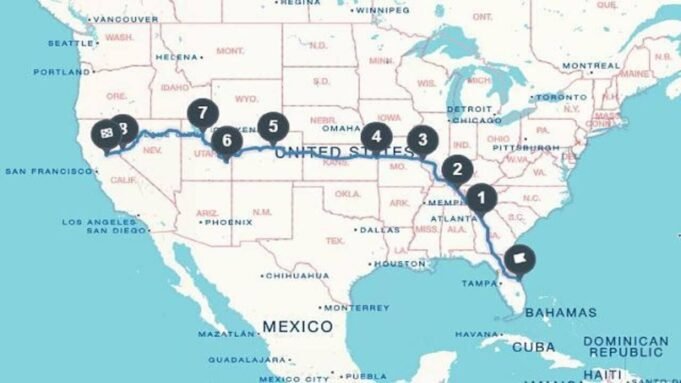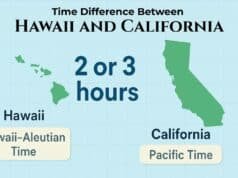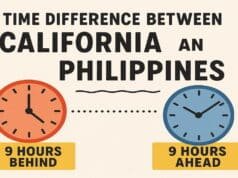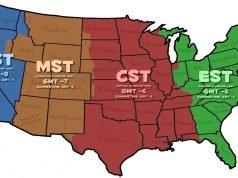When traveling across the United States, understanding time zone differences can be essential for staying on schedule, especially when making plans between states on opposite coasts. Florida and California, separated by a vast distance, are three time zones apart, leading to some key differences in timing that can impact travel, work, and communication. In this post, we’ll cover everything you need to know about the time difference between Florida and California, including how it affects daily life and planning.
Understanding Time Zones: Florida vs. California
The U.S. is divided into several time zones, with Florida mostly in the Eastern Time Zone (ET) and California in the Pacific Time Zone (PT). This difference leads to a three-hour gap between the two states.
- Eastern Time (ET) – UTC-5 during Standard Time, UTC-4 during Daylight Saving Time
- Pacific Time (PT) – UTC-8 during Standard Time, UTC-7 during Daylight Saving Time
The time difference means that when it’s 12:00 PM (noon) in Florida, it’s only 9:00 AM in California. So, for someone calling from Florida to California in the afternoon, the call could reach California in the early morning.
Read: Dallas Time Zone
Why Does the Time Difference Matter?
This three-hour time difference can affect scheduling, productivity, and even travel plans. Here’s how:
Business and Communication: Many people in Florida might find that their California colleagues are just starting their workday while they’re already halfway through theirs. This can impact meetings, phone calls, and other communication.
Travel and Arrivals: When flying between Florida and California, travelers often gain or lose time. For instance, a flight that departs Florida at 10:00 AM ET and takes five hours will arrive in California at approximately 12:00 PM PT, seemingly “earlier” than expected.
Events and Broadcasts: National events, such as sports games or televised broadcasts, often reflect the time difference. A game starting at 8:00 PM ET in Florida will air at 5:00 PM PT in California, which might lead to different viewing experiences for residents in each state.
How to Manage the Time Difference?
To make the most of communication and planning across time zones, here are some practical tips:
- Use Time Management Apps: Apps like World Clock or time zone converters help track time differences and prevent missed meetings or calls.
- Schedule Wisely: When arranging meetings between Florida and California, aim for times that fall during standard business hours for both states. For example, scheduling a call at 12:00 PM ET (9:00 AM PT) or 3:00 PM ET (12:00 PM PT) can be more convenient.
- Be Mindful of Daylight Saving Time: Both Florida and California observe Daylight Saving Time, but the actual dates may vary slightly each year. Make sure to adjust clocks accordingly to avoid timing mishaps.
Time Difference Fun Facts
Three Hours, Different Seasons: Because of the geographical spread, Florida and California can experience different seasons at the same time! In winter, for example, Florida may feel mild and humid, while California could be experiencing a cooler, dry climate.
Sunrise and Sunset: Due to the time difference, California enjoys later sunsets than Florida, which can be a perk for beachgoers and outdoor enthusiasts in the Golden State.
Read: Alabama Time Zone
Final Thoughts
While the three-hour time difference between Florida and California may seem minor, it can influence everything from business meetings to travel schedules. By understanding and planning around this time difference, you can stay connected and efficient, whether you’re working, traveling, or just keeping in touch with friends across the country.
Next time you’re making plans with someone on the opposite coast, keep this time difference in mind—it can make all the difference in keeping your day running smoothly!















